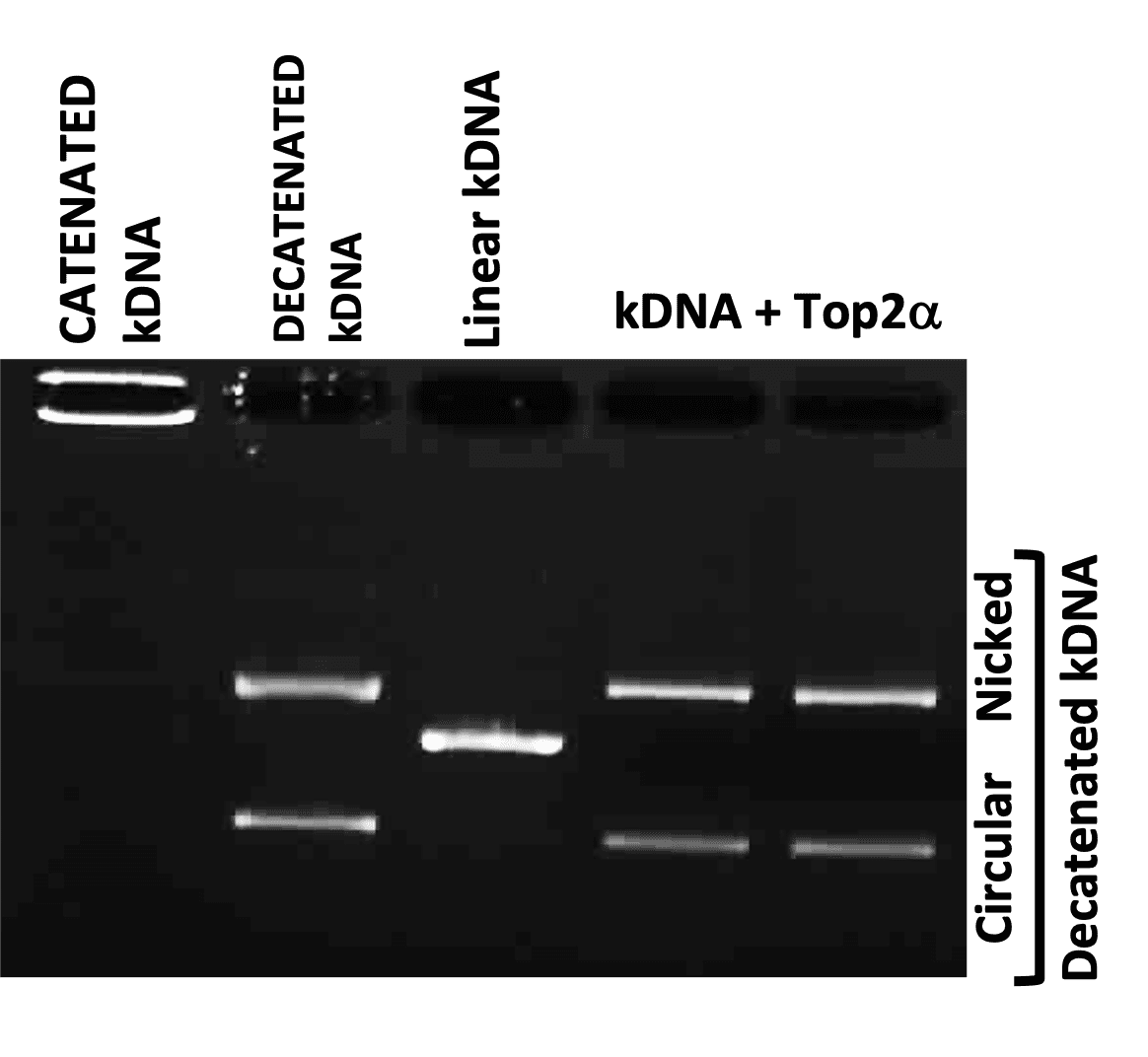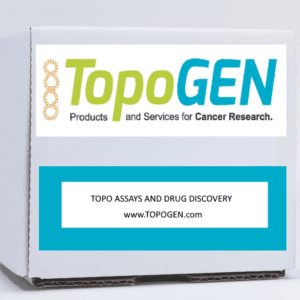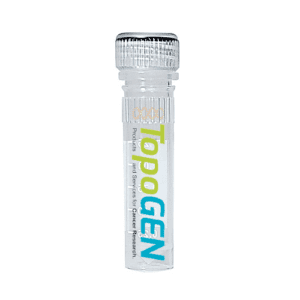Kinetoplast DNA (kDNA) is the ideal substrate for topoisomerase II assays because it is specific for type II reaction mechanisms. Researchers can even assay for a type II enzyme in the presence of large excess of topoisomerase I. Thus, kDNA works well to quantify type II activity in crude cell extracts, which are frequently overloaded with topoisomerase I. Kinetoplast DNA works exceptionally well with human Top 2a and b as well as prokaryotic enzymes, such as DNA gyrase or topoisomerase IV. KDNA is packaged with our Topo II Assay Kit, Topo II Drug Screening Kit, and Gyrase Assay Kits.
Differentiation from other DNA Substrates
Assays employing crude extracts for topo II activity based upon relaxation of supercoiled DNA can be complicated due to the presence of topo I in partially purified fractions. Additional complications arise with contaminating nuclease activity (due to Mg++) which degrade or nick the supercoiled substrate. These problems can be avoided by using kDNA substrate prepared from the kinetoplast of the insect trypanosome Crithidia fasciculata. Kinetoplast DNA is an aggregate of interlocked DNA minicircles (mostly 2.5 kb) that form extremely large networks of high molecular weight. As a result, these networks fail to enter an agarose gel. Upon incubation with human topoisomerase II alpha, which engages DNA in a double stranded breaking and reunion cycle, minicircular DNAs are effectively released (decatenated). The decatenated minicircles move rapidly into the gel owing to their small size. This reaction is specific for Type II enzymes and will not detect Topoisomerase I. TopoGEN’s kDNA is certified for use with all of our Top2 enzymes but is suitable for crude extracts from human/animal cell lines.
Kinetoplast DNA Quality Control Tests
For catenated KDNA substrate, at least 90% of the DNA will be retained in the well of a 1% agarose gel.
Storage Buffer
kDNA is stored in 10 mM Tris-Cl (pH 7.5), and 1 mM EDTA at the concentration specified with the product.
kDNA should be stored at 4°C; however, long term storage at -20°C is acceptable. The substrate is usually shipped at ambient temperature.
kDNA Data Sheet
Material Safety Data Sheet
Reviews and Citations
- Ege Gok, Naz Unal, Burcin Gungor, Gulderen Karakus, Savas Kaya, Pakize Canturk and Konstantin P. Katin: Evaluation of the Anticancer and Biological Activities of Istaroxime via Ex Vivo Analyses, Molecular Docking and Conceptual Density Functional Theory Computations. Molecules 2023, 28(22), 7458; https://doi.org/10.3390/molecules28227458.
- Phillips JW, Goetz MA, Smith SK, Zink DL, Polishook J, Onishi R, Salowe S, Wiltsie J, Allocco J, Sigmund J, Dorso K, Lee S, Skwish S, de la Cruz M, Martin J, Vicente F, Genilloud O, Lu J, Painter RE, Young K, Overbye K, Donald RGK, Singh SB: Discovery of Kibdelomycin, A Potent New Class of Bacterial Type II Topoisomerase Inhibitor by Chemical-Genetic Profiling in Staphylococcus aureus. Cell Chemistry and Biology 2011, 18: 955-965. doi: 10.1016/j.chembiol.2011.06.011.



